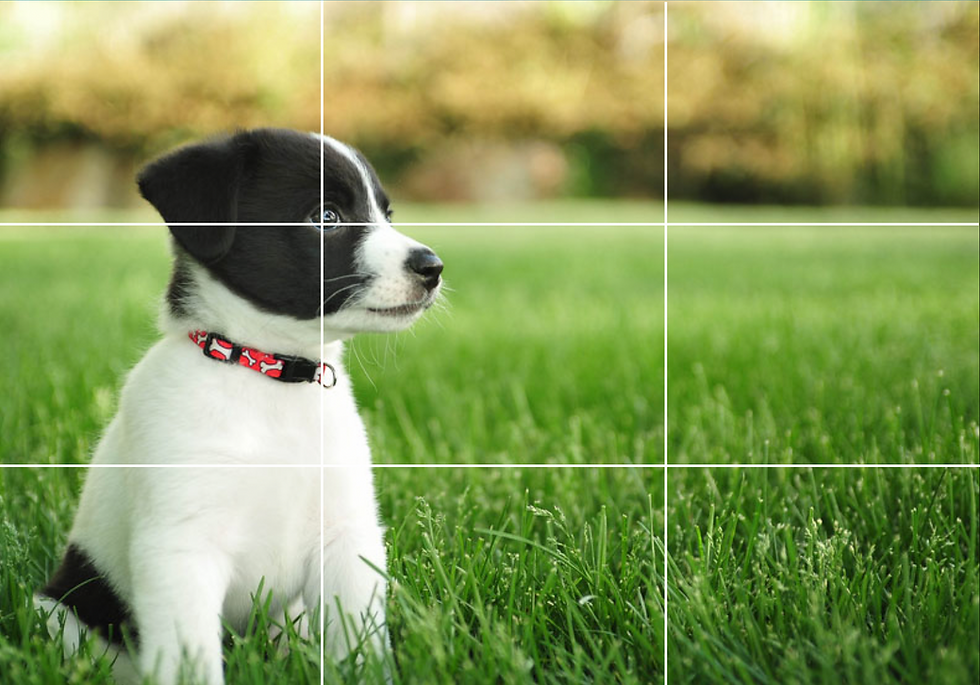How to Master the Rule of Thirds for Stunning Visuals and When to Break the Rules
- Jim Zulakis

- May 9
- 3 min read
The rule of thirds is a powerful tool in photography and videography that can transform your images and videos. Whether you're just starting in videography or you're a skilled photographer, mastering the rule of thirds can greatly improve your visual storytelling and composition. By using this simple technique, you can grab your audience's attention and maintain their engagement.

Understanding the Rule of Thirds
The rule of thirds introduces a grid that divides your frame into nine equal sections. This grid consists of two horizontal lines and two vertical lines, creating four intersections. Positioning your main subject along these lines or at their intersections—known as "power points"—leads to more balanced and captivating images.
For instance, in a landscape shot, position the horizon along the bottom horizontal line instead of in the center. This adjustment allows viewers to focus on the expansive sky above, making the image more engaging.

Effective Composition Through the Rule of Thirds
Visualize a tic-tac-toe grid overlay on your screen. Aligning important elements of your shot along these lines can effectively guide viewers' attention. In a portrait, place the subject's eyes near the top power point. This placement draws the viewer's focus, enhancing emotional connections.
Additionally, using the rule of thirds can amplify storytelling. For example, if you're filming someone walking down a path, position them on the left vertical line. This creates space on the right, suggesting movement and anticipation. A study by the University of Westminster found that images with subjects positioned according to the rule of thirds are viewed as more dynamic in surveys.

Relation to the Golden Mean
The golden mean, or golden ratio, complements the rule of thirds in photography and videography. While both concepts promote balance, the golden mean is based on a more complex proportion—approximately 1:1.618. This can result in an aesthetically pleasing spiral pattern throughout your composition.
For example, in fine art photography, using the golden mean can guide the viewer's eye through the image, creating a sophisticated feel. However, for most everyday shooting scenarios, the simplicity of the rule of thirds will often suffice. Consider famous works like those by photographer Ansel Adams, who expertly combined both techniques to produce breathtaking scenes.

Rules Were Made to Be Broken – When to Break the Rules
While the rule of thirds is widely influential and commonly used in photography and film, knowing when to break it can open the door to greater creative expression. Sometimes, centering your subject creates a powerful impact, such as for portraits or subjects that evoke intimacy. For instance, a tightly framed shot of a child can amplify emotions and connection when the child is positioned in the center.
Breaking the rules can add depth to your storytelling. In a scene meant to convey loneliness, you might choose to place your subject off to one side and create empty space on the other. This technique can evoke feelings of isolation, engaging viewers on a deeper emotional level. Remember, great storytellers understand the balance between following rules and experimenting with unconventional compositions. Check out this video with examples of symmetrical clips from Wes Anderson's films.
Final Thoughts
Mastering the rule of thirds is an essential skill for anyone looking to enhance their videography or photography. By understanding effective composition principles, you can create captivating content that resonates with your audience. Don’t forget to explore the golden mean and embrace the creativity that comes from breaking the rules. This exploration can lead to stunning visuals and unforgettable stories.

Comments